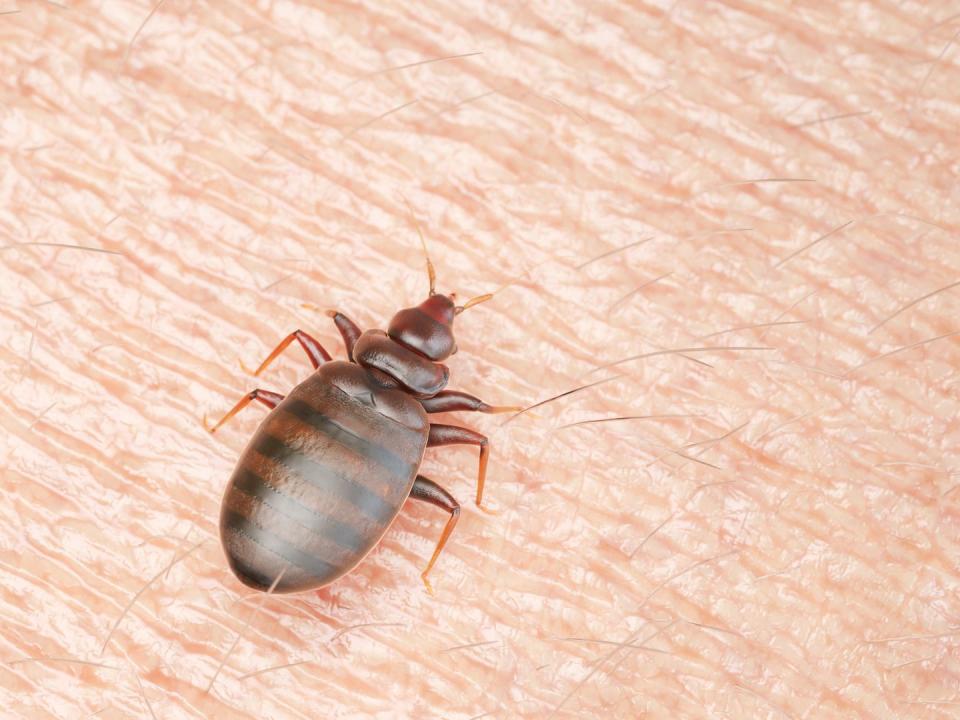Here's what to do if you have bedbugs

Bedbugs are tiny parasitic insects that feed by sucking blood from warm-blooded animals, including humans. They do not spread disease but their bites can be uncomfortable and cause itching and scratching, and in the worse case scenario bedbug bites can become infected.
Dr Roger Henderson looks at bedbug causes, symptoms, treatment and prevention tips:
What are bedbugs?
Bedbugs are small insects that do not fly but move by crawling and so they can live anywhere in the home, feeding by sucking blood from humans or animals. They prefer to live in a temperature of between 70-80F, and can produce up to three generations each year.
Bedbugs are found all over the world and in any part of the home but are usually found in beds (hence the name) including in mattresses and bed frames, as well as in curtains, carpets, and any cracks and crevices near a bed.
Hotels are not immune to their presence and because bedbugs can arrive in the suitcases of guests, there have been a number of high-profile cases of them being found in expensive hotels.
⚠️ Hygiene does not influence whether bedbugs are present or not as they live in both dirty and clean conditions.
Bedbug bite symptoms
What are the symptoms of a bedbug bite? Although it can be tricky to distinguish the bite of a bedbug from other insects, there are a number of ways to tell if a bite is from a bedbug. These include the following:
Bedbug bites are red.
Bedbug bites have a dark spot in the centre.
Bedbug bites are itchy.
Bedbug bites are typically arranged in clusters or a line of bites.
The face, arms, hands and neck are the most usual places to be bitten - although any part of the body can be affected.
There is usually no pain although bedbug bites can sometimes irritate or itch.
Bedbugs are significantly more likely to be present in crowded buildings that have a high occupancy turnover, such as hotels and cruise ships, homeless shelters, refugee camps, trains and buses and short-occupation apartments and flats

What do bedbugs look like?
Bedbugs are small (about the size of a small apple seed), reddish-brown oval insects with flat bodies, that are sometimes mistaken for ticks.
Signs can appear up to two weeks after the original bite has occurred and may include:
Red blood spots on your bedding from bedbug bites.
Dead bedbugs on your bedding.
Tiny brown spots on bedding or furniture (bedbug faeces).
If there are several bites lined up in a row, doctors sometimes refer to these as the ‘breakfast, lunch and dinner’ sign, which refers to the sequence of feeding of the bedbugs along the line of bites.
Bedbug bite treatment
What's the best treatment for bedbug bites? Most bedbug bites don't require treatment as they cause few if any problems. To minimise infection, simply keep the affected area clean and try not to scratch the bites.
However, a bite can occasionally cause significant itching or an allergic reaction. In these instances a topical steroid cream or an antihistamine tablet may be required to ease these symptoms. Ask your pharmacist for advice.
If you experience severe scratching around a bedbug bite, your skin becomes inflamed and is still painful after trying treatment or the redness around the bite starts to spread, you might have a bacterial infection that requires antibiotic treatment. Ask your GP for advice.
How to get rid of bedbugs
To get rid of bedbugs try the following tips:
✔️ Bedbugs do not usually burrow under clothing, so wearing pyjamas at night can help reduce the likelihood of being bitten.
✔️ Invest in a good mattress protector.
✔️ Eliminating bedbugs completely can be very difficult and may require the services of a professional pest control service. They can live for up to a year without feeding so leaving a room unoccupied for a long time doesn’t work!
✔️ Wash all of your bedlinen and clothing at 60C.
✔️ Clean and hoover your bedroom regularly. Bedbugs live in both dirty and clean conditions but practising good hygiene will help you spot them early.
✔️ Insecticides in dust or spray form can help to control bedbugs but heavily infested mattresses may need to be replaced.
Last updated: 03-02-2021
You Might Also Like


